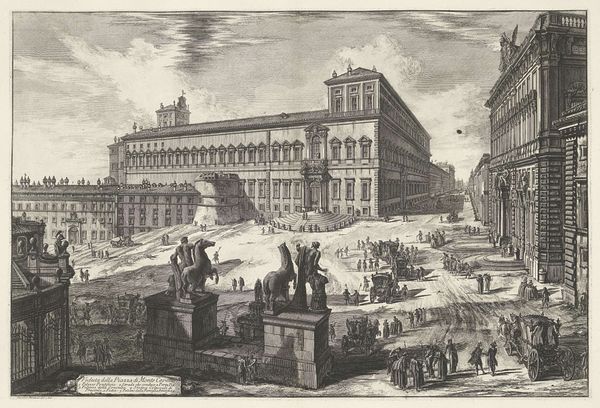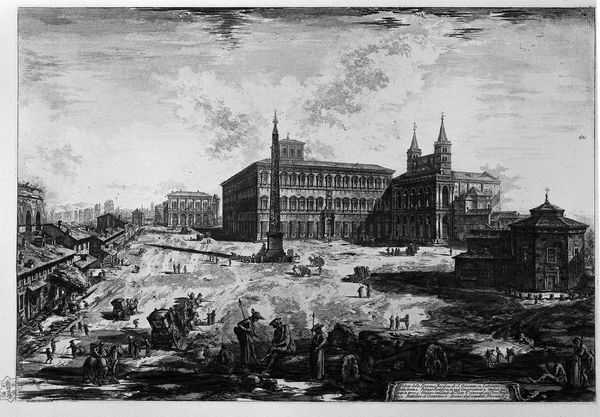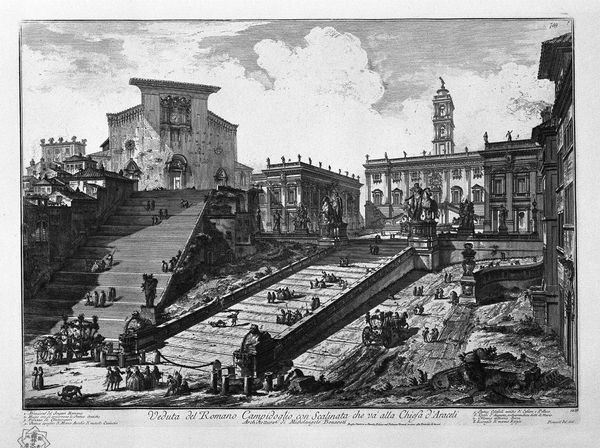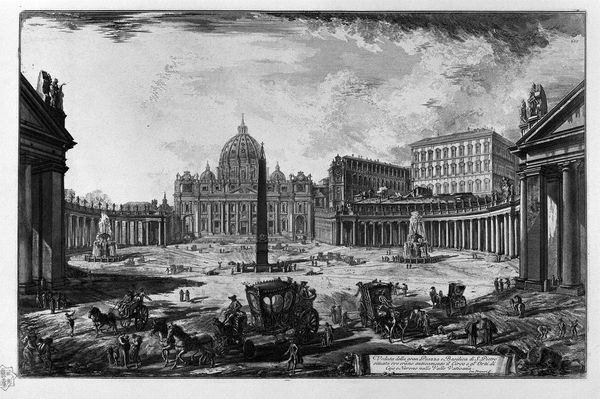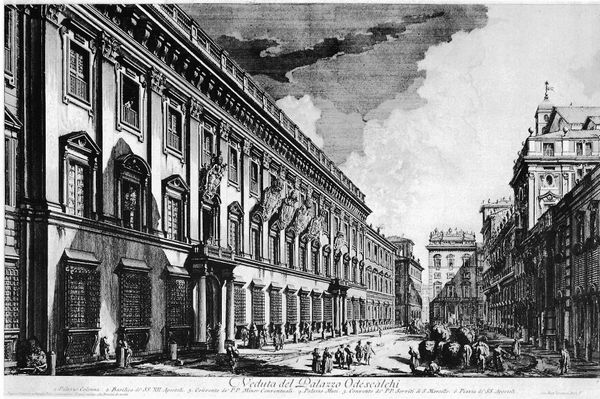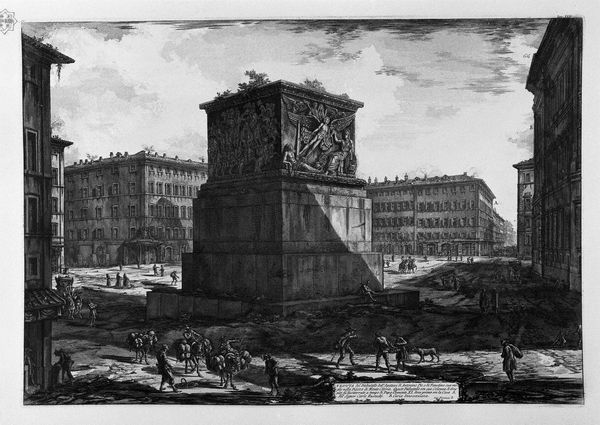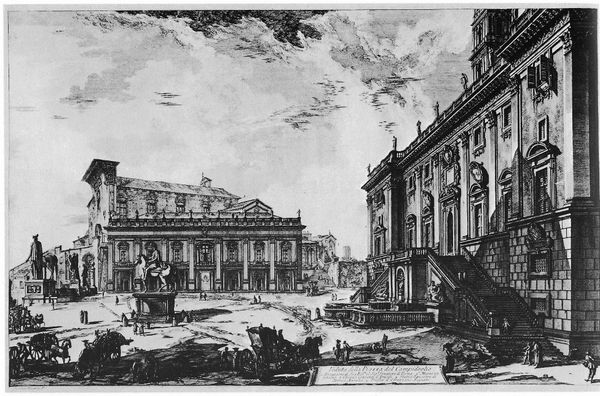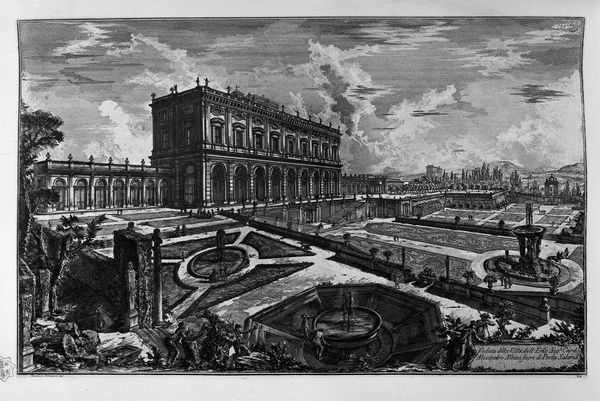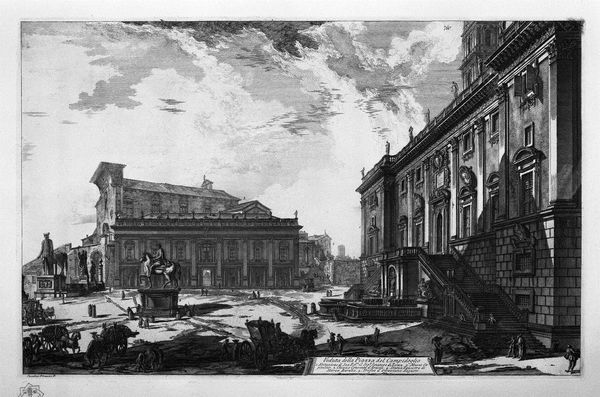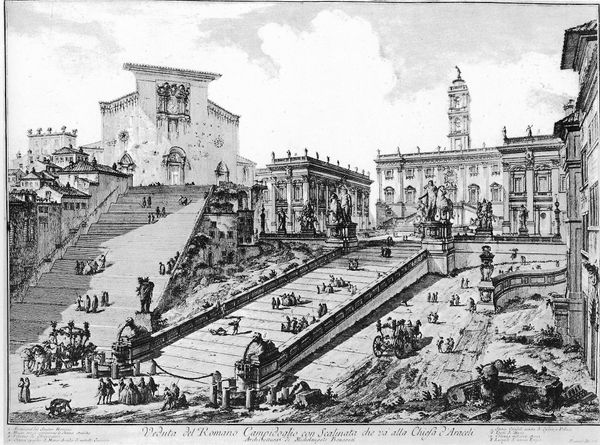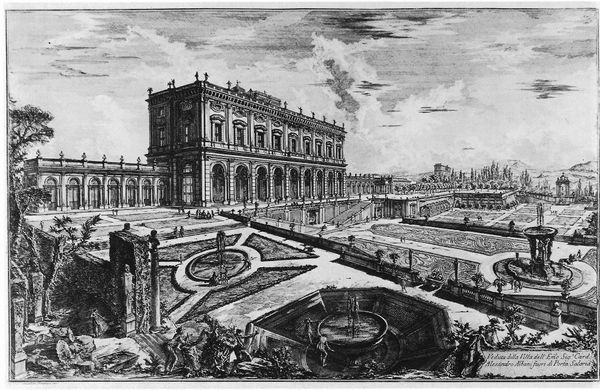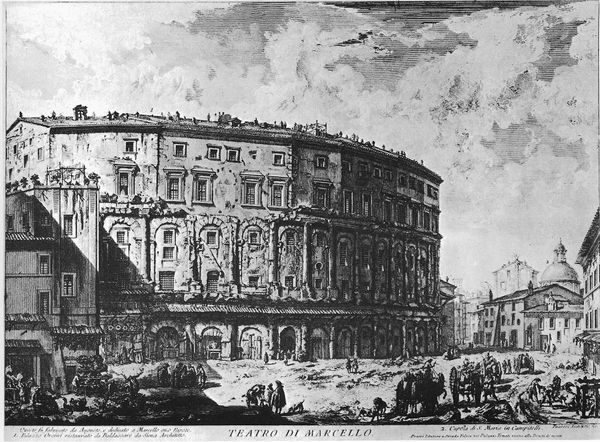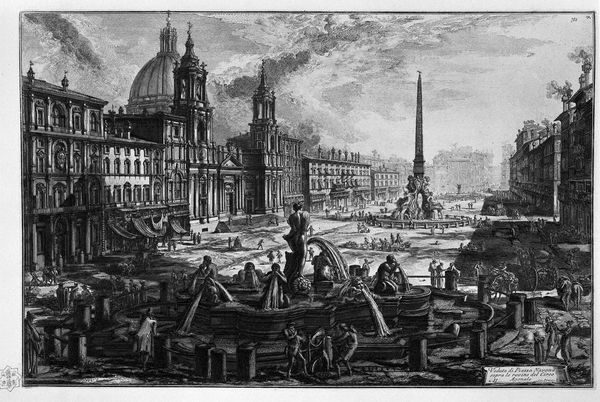
photography
#
architectural landscape
#
mechanical pen drawing
#
pen illustration
#
charcoal art
#
photography
#
linework heavy
#
highly detailed
#
column
#
pen-ink sketch
#
pen work
#
pencil art
#
intricate and detailed
Copyright: Public domain
Editor: So, here we have Giovanni Battista Piranesi's "Vedute di Roma," an etching. It's intensely detailed and almost feels like a photograph, capturing a bustling Roman scene. What strikes me is the almost theatrical contrast between the imposing architecture and the everyday lives of the people bustling about. How do you interpret this work? Curator: The theatricality you observe is key. Piranesi isn’t just documenting; he's constructing a symbolic landscape. What emotions does this "stage" evoke? Look at the architectural details, the figures, and the use of light and shadow. Consider how Piranesi is meticulously recording Roman splendor but with his own vision of dramatic flair. Editor: There is a real feeling of awe, of standing before something both ancient and powerful, yet… accessible. The ordinary people make the scene approachable. Is there any intention in the way the artist balanced this contrast? Curator: Exactly. Piranesi is invoking "Roma" as cultural memory. This isn't just a picture postcard, but an invitation. Do you see how the strong lines direct your gaze, creating symbolic weight in different architectural and social aspects of Roman life? This deliberate manipulation reveals much about 18th-century views of history, empire, and the continuity of cultural power. Editor: It's as if the buildings are characters themselves, bearing witness to the unfolding drama. It has that emotional and cultural connection. Curator: Precisely. Through visual language, Piranesi preserves, romanticizes, and even mythologizes Rome for his contemporaries, and for us, too, offering a glimpse into the collective imagination of an era. What do you take away from understanding his purpose? Editor: I am appreciating Piranesi's intention of merging reality and theatricality, reminding me about how art can shape perceptions of history and cultural identity. Curator: Yes, precisely! Understanding how images accrue meaning over time really transforms how we see the world.
Comments
No comments
Be the first to comment and join the conversation on the ultimate creative platform.
